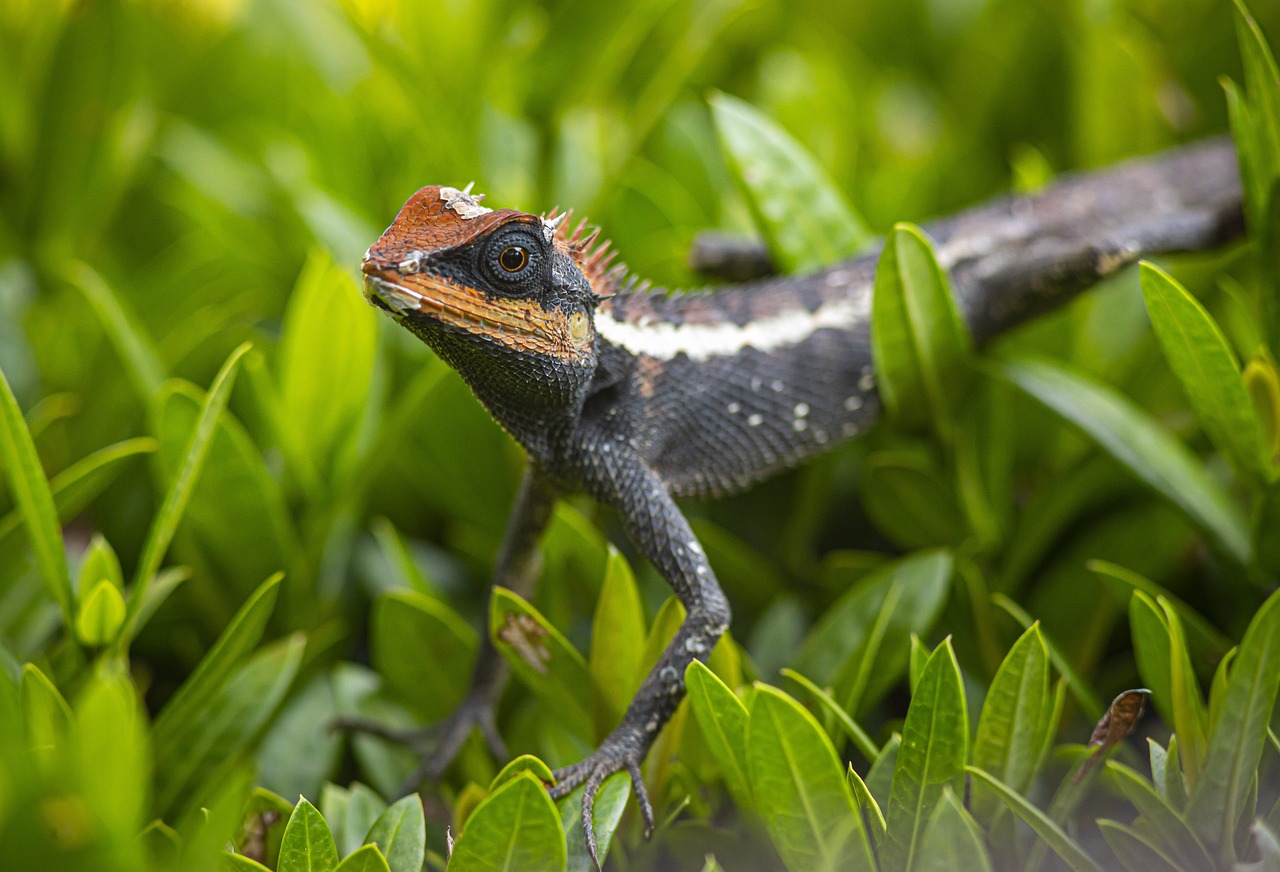Emma Gray’s Forest Lizard, scientifically known as Calotes emma, is a species of agamid lizard found in parts of Southeast Asia. Here are some key features and characteristics of this lizard:
- Appearance:
- Size: Emma Gray’s Forest Lizard is a medium-sized lizard, with a total length (including tail) of about 25 to 35 centimeters (10 to 14 inches).
- Color: The coloration can vary, but they are generally greenish-brown or gray, which provides excellent camouflage in their forest habitats. Males may exhibit more vibrant colors, especially during the breeding season.
- Distinctive Markings: They often have a series of dark bands or stripes along their body and tail. The throat region can be brightly colored, especially in males.
- Body Structure: They have a well-developed crest running along their back and tail, and their bodies are slightly flattened with long limbs and toes, which aid in climbing.
- Habitat:
- This species is typically found in tropical and subtropical forests, including evergreen and deciduous forests. They are also known to inhabit secondary forests and plantations.
- They prefer areas with dense vegetation, which provides both food and cover from predators.
- Distribution:
- Emma Gray’s Forest Lizard is found in Southeast Asia, including countries like Thailand, Myanmar, Laos, Cambodia, Vietnam, and parts of southern China.
- They are commonly seen in lowland forests but can also be found at higher elevations.
- Behavior:
- Arboreal Lifestyle: These lizards are primarily arboreal, spending much of their time in trees and shrubs. They are excellent climbers and use their long limbs and toes to navigate through the foliage.
- Diurnal Activity: They are diurnal, meaning they are active during the day. They bask in the sunlight to regulate their body temperature and are often seen on tree trunks or branches.
- Territoriality: Males are territorial and may exhibit displays of aggression towards other males, especially during the breeding season. This includes head bobbing, puffing up their throats, and displaying their crests.
- Diet:
- Emma Gray’s Forest Lizard is primarily insectivorous, feeding on a variety of insects and other small invertebrates. They may also consume small vertebrates and plant matter occasionally.
- Their diet typically includes ants, beetles, caterpillars, and other small arthropods.
- Reproduction:
- Breeding occurs during the warmer months. Males attract females through visual displays and may engage in combat with rival males.
- Females lay clutches of eggs in the soil or leaf litter. The number of eggs can vary, but typically ranges from 5 to 15 eggs per clutch.
- The eggs incubate for several weeks to months, depending on environmental conditions, before hatching into miniature versions of the adults.
- Conservation Status:
- Emma Gray’s Forest Lizard is currently not considered at significant risk and does not have a specific conservation status. However, habitat destruction due to deforestation and agricultural expansion could pose threats to local populations.
- Conservation efforts focused on preserving forest habitats are crucial for the continued well-being of this and many other forest-dwelling species.
In summary, Emma Gray’s Forest Lizard (Calotes emma) is a versatile and adaptive species well-suited to life in the forests of Southeast Asia. Its arboreal habits, varied diet, and distinctive physical characteristics make it an interesting subject for herpetologists and nature enthusiasts alike. Conservation of its natural habitat remains essential to ensure the species thrives in its native range.
Visited 798 times, 2 visit(s) today
Views: 1110
Subscribe to the newsletter:
